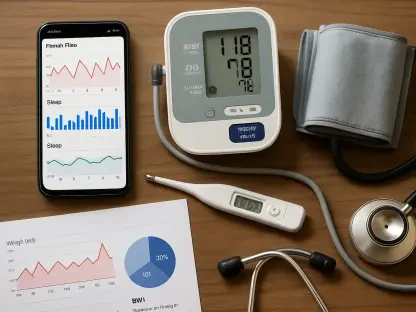In the ever-evolving landscape of health care, one emerging initiative stands out for its groundbreaking potential to enhance patient safety and care quality in acute medical settings. A pioneering academic practice partnership (APP) between William Osler Health System (Osler) and the University of Toronto’s Faculty of Applied Science and Engineering’s Centre for Healthcare Engineering (CHE) aims to revolutionize acute care by integrating Human Factors research, education, and clinical practice. Launched during the International Symposium on Human Factors and Ergonomics in Health Care, the initiative marks a significant advance in Ontario, bridging the traditional gap between engineering expertise and clinical practice.
Integrating Education, Practice, and Research
Engineering Students’ Practical Experience
One of the cornerstones of the Osler-University of Toronto Human Factors APP is the emphasis on providing practical experience to students in Mechanical and Industrial Engineering. These students have the valuable opportunity to immerse themselves in a hospital environment, directly applying their theoretical knowledge to real-world problems. This hands-on approach not only enriches the students’ learning experience but also positions them to develop innovative solutions to enhance patient safety and operational efficiency. The collaboration helps bridge the gap between academic learning and practical application, preparing students to address the complex challenges faced in health care.
Furthermore, engineering students’ presence within the hospital setting fosters a culture of innovation and continuous improvement. By observing and analyzing everyday clinical routines, they can propose and implement changes that might not be apparent to those immersed in clinical duties. This unique perspective is invaluable as it combines technical expertise with an understanding of human behavior and ergonomics, essential components for developing effective and sustainable improvements. This multidisciplinary approach ensures that engineering solutions are not only technically sound but also practical and user-friendly.
Advancing Health Care Innovation
Another key aspect of the partnership is the integration of Human Factors into health care innovation projects. Human Factors focuses on understanding how people interact with technology and their environment, aiming to optimize these interactions for better safety and performance. By incorporating these principles, the initiative seeks to develop and implement solutions that enhance patient care quality and safety. This could include designing more intuitive medical devices, reconfiguring clinical workflows to reduce errors, or developing training programs that better prepare health care professionals to deal with high-stress situations.
Additionally, the APP emphasizes rapid knowledge translation. By swiftly applying research findings to clinical settings, the partnership ensures that new knowledge is promptly utilized to improve patient care. This close collaboration between researchers and clinicians allows for a more dynamic and responsive approach, where insights from the field can inform ongoing research projects. This iterative process helps accelerate the development and deployment of innovative solutions, ensuring that the benefits of research are quickly realized in practice, ultimately enhancing patient outcomes.
Collaborative Learning and Expertise Building
Professional Development for Osler Staff
The partnership between Osler and the University of Toronto is not solely focused on students; it also involves significant professional development opportunities for Osler staff. The initiative promotes collaborative learning, where health care professionals and engineering students work together to solve problems. This cross-disciplinary collaboration fosters a deeper understanding and appreciation of each other’s expertise, leading to more effective and innovative solutions. Health care professionals gain insights into the latest technological advancements and research methodologies, while engineers learn about the practical challenges and constraints faced in clinical settings.
Professional development activities include workshops, training programs, and joint projects, all aimed at enhancing the skills and knowledge of Osler staff. By participating in these activities, health care professionals can stay updated on the latest developments in Human Factors and engineering, enabling them to apply these principles in their practice. This continuous learning culture helps create a more competent and confident workforce, better equipped to navigate the complexities of modern health care and deliver high-quality care to patients.
Enhancing Patient Safety and Clinical Efficiency
One of the most significant anticipated outcomes of the partnership is the improvement of patient safety and clinical efficiency. By applying Human Factors principles to various aspects of health care, the initiative aims to reduce medical errors, enhance communication and collaboration among clinical teams, and optimize workflows. For example, redesigning the layout of a surgical room to minimize distractions and improve visibility can significantly reduce the likelihood of errors during procedures. Similarly, implementing standardized protocols for hand hygiene can help prevent hospital-acquired infections, thereby improving patient outcomes.
Moreover, the partnership’s focus on real-world applications ensures that these improvements are both practical and sustainable. By involving health care professionals in the design and implementation process, the solutions developed are tailored to the specific needs and constraints of the clinical setting. This collaborative approach not only enhances the effectiveness of the interventions but also ensures that they are readily adopted and integrated into practice, leading to lasting improvements in patient care and safety.
Bridging Engineering, Human Factors, and Clinical Practices
Multidisciplinary Approach to Health Care
The multidisciplinary nature of the Osler-University of Toronto Human Factors APP is one of its defining features. Combining the expertise of engineers, clinicians, and researchers, the initiative aims to develop comprehensive solutions that address the diverse challenges faced in acute care settings. This collaborative approach ensures that the solutions are well-rounded, taking into account both the technical aspects and the human elements of health care delivery. By leveraging the strengths of each discipline, the partnership can develop more effective and innovative solutions, ultimately aiming to improve patient care quality and safety.
This approach is particularly relevant in today’s highly complex health care environment, where the interplay between technology and human behavior is critical. Medical devices, for instance, must be designed to be not only technologically advanced but also user-friendly and intuitive. Similarly, clinical workflows need to be optimized to reduce cognitive load on health care professionals, thereby minimizing the risk of errors. By integrating engineering principles with an understanding of human behavior and ergonomics, the initiative aims to develop solutions that are both effective and practical.
Impact on Health Care Systems
The partnership also holds significant potential for impacting health care systems more broadly. By serving as a model for other institutions, the Osler-University of Toronto Human Factors APP can inspire similar collaborations across the health care landscape. The success of this initiative could demonstrate the value of integrating Human Factors and engineering principles into health care, encouraging other institutions to adopt similar approaches. This could lead to a broader cultural shift, where continuous improvement and innovation become central to the health care ethos.
Additionally, the initiative’s focus on rapid knowledge translation ensures that the benefits of research are quickly realized in practice. This dynamic and responsive approach ensures that health care systems can adapt to new challenges and opportunities, continually improving the quality and safety of patient care. By fostering a culture of innovation and collaboration, the initiative aims to create a more resilient and agile health care system, better equipped to meet the evolving needs of patients and providers.
A Model for Future Health Care Collaborations
Real-World Applications and Research Initiatives
The Osler-University of Toronto Human Factors APP stands as a model for future health care collaborations, emphasizing the importance of real-world applications and research initiatives. By focusing on practical solutions to real-world problems, the partnership ensures that the research conducted is relevant and impactful. This approach not only enhances patient care quality and safety but also provides valuable insights that can inform future research projects. By integrating academic theory with practical application, the initiative aims to create a virtuous cycle of continuous improvement and innovation.
Moreover, the APP highlights the potential for co-developing new research initiatives that address pressing health care challenges. By involving health care professionals in the research process, the partnership ensures that the projects are grounded in the realities of clinical practice. This collaborative approach helps identify new areas of research and development, driving innovation and advancing the field of health care engineering. By leveraging the strengths of each partner, the initiative can develop more effective and targeted solutions, ultimately contributing to the overall improvement of the health care system.
Building a More Effective and Equitable Health Care System
In the dynamic field of health care, an innovative initiative promises to significantly improve patient safety and care quality in acute medical settings. The academic practice partnership (APP) forged between William Osler Health System (Osler) and the University of Toronto’s Faculty of Applied Science and Engineering’s Centre for Healthcare Engineering (CHE) seeks to transform acute care by melding Human Factors research, education, and clinical practice. This partnership was officially launched at the International Symposium on Human Factors and Ergonomics in Health Care, representing a major leap forward in Ontario. By merging engineering expertise with clinical practice, this initiative fills a critical gap, thereby enhancing the overall healthcare system. The collaboration aims to introduce new methodologies and technologies that prioritize human factors, ultimately leading to better patient outcomes. This approach not only addresses immediate healthcare challenges but also sets a precedent for future improvements in acute medical care.









